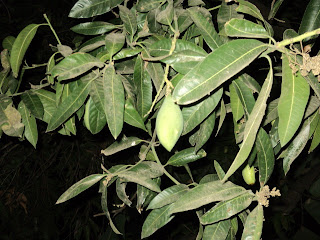Nayanmars (நாயன்மார்கள்)– an introduction
To start with
Nayanmars are very
different from
Azhwars. Azhwars, devotees of Lord Vishnu, sang his praise. The
compositions of all the
Azhwars are well recorded.
Nayanmars, a huge number compared
to Azhwars, were from all walks of life and their simple devotion to Lord Shiva
gained them this status. Only some of them were well versed in singing on the
Lord. The collection of hymns by many devotees is called Panniru Thirumuraigal.(பன்னிரு திருமுறைகள்)
These Thirumurais were composed
over a number of years by devotees who lived during different periods and there
was no information about any palm scriptures of the same. Many hymns were sung
in temples regularly and on hearing one, Raja Raja Chozhan was in ecstasy.
He wanted to find out more about such
compositions and also if any written records were available. He requested Nambi
Andar Nambi (நம்பியாண்டார் நம்பி) to help him find these who in turn requested the Polla Pillayar of
Thirunaraiyur to let them know the location of these scriptures. (More details
about Nambi Andar Nambi in another blog).
On hearing from Lord Ganapathi
that the original palm scripts of the hymns were kept locked in a chamber in
the Chidambaram temple, The King and Nambi Andar Nambi proceeded to
Chidambaram. On opening the chamber, they were shocked to see that most of the
palm leaves were eaten away by white ants and they could recover only some of
it.
When they were saddened about
losing such a treasure, they heard a divine voice saying that the hymns they
recovered were enough for the present world. The 13680 verses of the
Thirumurais 1 – 11 found intact is only a small part of the total compositions
by the devotees. Nambi Andar Nambi
compiled and documented the recovered hymns as Thirumurai 1 to 11 adding his
own compositions to the lot.
-
Thirumurais 1, 2 and 3 are the verses sung by
Thirugnana Sambandar (திருஞான சம்பந்தர்) called Thevaram.(தேவாரம்) It is also called Thirkkadai kaapu (திருக்கடைக் காப்பு)
-
Thirumurais 4, 5 and 6 are the hymns sung by
Thirunavakarasar (திருநாவுக்கரசர்) (Appar) called Thevaram
-
Thirumurai 7 is by Sundaramurthy Nayanar (சுந்தரமுர்த்தி நாயனார்) also called
Thevaram. It is also called Thiruppaatu.(திருப்பாட்டு)
-
Thirumurai 8 is
the Thiruvasagam (திருவாசகம்) and Thirukkovaiyar (திருக்கோவையார்) by Manickavasagar (மாணிக்கவாசகர்)
-
Thirumurai 9 consists of the verses of Thiru Maligai
Thevar (திருமாளிகைத் தேவர்) and eight others (Senthanar (சேந்தனார்), Karuvur Thevar (கருவூர் தேவர்) , Poonthuruthi Kaadanambi (பூந்துருத்தி காடநம்பி),
Kandaraathithar (கண்டராதித்தர்), Venaatuadigal (வேணாட்டடிகள்), Thiruvaaliamudhanaar (திருவாலியமுதனார்), Purutothama Nambi (புருடோத்தம நம்பி),
Sethirayar (சேதிராயர்) ) and it is called Thirvisaippa (திருவிசைப்பா) and Thiruppallaandu (திருப்பல்லாண்டு)
-
Thirumurai 10 is the Thirumandiram (திருமந்திரம்) by Thirumoolar (திருமூலர்)
-
Thirumurai 11 by
Lord Thiru aalavai udayar (திரு ஆலவாயுடையார்) (Lord Shiva) himself and eleven others (Karaikal
Ammaiyar (காரைக்கால் அம்மையார்), Iyadigal Kadavarkon (ஐயடிகள் காடவர்கோன்), Seraman Perumal (சேரமான் பெருமாள்), Nakeerar (நக்கீரர்), Kalladar (கல்லாடர்), Kabilar (கபிலர்),
Baranar (பரணர்) , Ilamperuman Adigal (இளம்பெருமான் அடிகள்) , Athiraavadigal (அதிராவடிகள்) , Patinathu adigal (பட்டினத்தடிகள்). This Thirumurai
also includes the hymns sung by Nambi Andar Nambi who compiled all above. This
is also called Prabhandam(பிரபந்தம்)
-
Thirumurai 12 is the Periya Puranam (பெரிய புராணம்) by Sekkizhar (சேக்கிழார்) . This
was written very much later compared to the compilation of the first eleven
Thirumurais and documents the devotion of the 63 Nayanmars to their Lord. This was initially called Thiruthondar Puranam
(திருத்தொண்டர் புராணம்) and later came to be called as Periya Puranam and considered as the twelfth
Thirumurai.
Though
Sekkizhar has accounted details of 63 Nayanmars only in his Thiruthondar
Puranam, the Thirumurais 9 and 11 include compositions of other devotees too.
Kindly wait for Thiru Neelakanta
Nayanar Puranam (திருநீலகண்ட நாயனார் புராணம் ) until 16th April!

















































